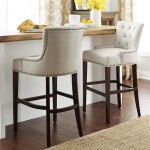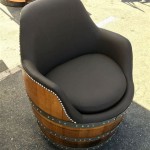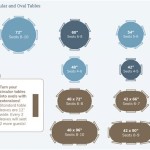Best Fabric For Covering Dining Chairs
Selecting the appropriate fabric for recovering dining chairs is a crucial decision that impacts both the aesthetic appeal and practical durability of the furniture. The ideal fabric should withstand daily use, resist stains, and complement the dining room's overall décor. Various factors must be considered, including the fabric's composition, weave, texture, and color, to ensure a harmonious blend of style and functionality.
The demands placed on dining chair upholstery are significant. These chairs are subject to spills, crumbs, and constant wear and tear from repeated sitting and standing. Therefore, the choice of fabric should prioritize resilience, ease of cleaning, and resistance to fading or abrasion. Furthermore, the fabric's texture and pattern play a vital role in establishing the dining room's ambiance, from formal elegance to casual comfort.
Understanding Fabric Properties
To make an informed decision, a thorough understanding of fabric properties is essential. This involves considering the fiber content, weave type, and any applied finishes that enhance performance. Natural fibers, synthetic fibers, and blends each offer distinct advantages and disadvantages regarding durability, maintenance, and cost.
Fiber Content: Natural fibers, such as cotton, linen, and wool, offer breathability and a soft feel. However, they may be more susceptible to staining and wear compared to synthetic options. Cotton is a versatile and affordable choice but often requires a protective finish for enhanced stain resistance. Linen possesses a natural texture and elegance but wrinkles easily. Wool is durable and naturally stain-resistant but can be more expensive. Synthetic fibers, including polyester, acrylic, and olefin, are known for their durability, stain resistance, and affordability. Polyester is a popular choice due to its resistance to fading, shrinking, and stretching. Acrylic offers a wool-like appearance and is resistant to mildew and sunlight. Olefin is highly stain-resistant and suitable for high-traffic areas. Blended fabrics combine the benefits of different fibers, aiming to provide a balance of comfort, durability, and ease of care. For example, a cotton-polyester blend offers the breathability of cotton with the added durability and wrinkle resistance of polyester.
Weave Type: The weave of a fabric significantly impacts its texture, durability, and appearance. Common weave types include plain weave, twill weave, and velvet. Plain weave fabrics, such as canvas and duck cloth, are durable and tightly woven, making them suitable for high-traffic applications. Twill weave fabrics, characterized by diagonal ribs, are known for their strength and resistance to abrasion. Examples include denim and herringbone. Velvet fabrics offer a luxurious and soft feel but may require more careful maintenance. The pile of velvet can be prone to crushing or matting, depending on the fiber content and construction.
Applied Finishes: Fabric finishes can enhance specific properties, such as stain resistance, water repellency, and flame retardancy. Stain-resistant finishes, like Scotchgard or Teflon, create a protective barrier that prevents liquids and dirt from penetrating the fibers. Water-repellent finishes make the fabric resistant to moisture, ideal for preventing spills from soaking in. Flame-retardant finishes are particularly important for upholstery used in public spaces or commercial settings, as they help to slow the spread of fire.
Recommended Fabrics for Dining Chair Upholstery
Based on the aforementioned properties, several fabrics stand out as excellent choices for dining chair upholstery. These fabrics offer a combination of durability, stain resistance, aesthetic appeal, and ease of maintenance.
Microfiber: Microfiber, typically made of polyester or a polyester blend, is a synthetic fabric known for its exceptional softness, durability, and stain resistance. Its tightly woven structure makes it resistant to spills and dirt, and it is relatively easy to clean with mild soap and water. Microfiber is also available in a wide range of colors and textures, making it a versatile choice for various decorating styles. The fine fibers of microfiber create a dense surface that resists pilling and snagging, contributing to its long-term durability. Furthermore, microfiber is often more affordable than natural fiber options, making it a budget-friendly choice.
Performance Fabrics: Performance fabrics are designed to withstand heavy use and resist stains, fading, and wear. These fabrics are often treated with special finishes that enhance their performance characteristics. Sunbrella is a well-known brand of performance fabrics, typically made from solution-dyed acrylic. Solution-dyed acrylic fabrics are highly resistant to fading, making them ideal for areas exposed to sunlight. They are also resistant to mildew and water damage, making them suitable for both indoor and outdoor use. Other performance fabric options include those made from olefin or polyester with added stain-resistant finishes. These fabrics are designed to withstand the rigors of daily life, making them a practical choice for dining chairs in busy households.
Twill: Twill fabrics, characterized by their diagonal ribbing, offer excellent durability and resistance to abrasion. Denim is a familiar type of twill fabric known for its strength and casual appearance. Other twill fabrics, such as chino cloth, can offer a more refined look. Twill fabrics are generally easy to clean and maintain, making them a practical choice for dining chairs. The tight weave of twill fabrics provides resistance to snags and tears, ensuring long-lasting performance. Furthermore, twill fabrics are available in a wide range of colors and patterns, allowing for customization to suit various decorating styles.
Vinyl: Vinyl is a synthetic fabric known for its exceptional durability, water resistance, and ease of cleaning. It is a popular choice for commercial settings due to its ability to withstand heavy use. Vinyl is also available in a wide range of colors and textures, including options that mimic the look of leather. However, vinyl can feel less breathable than natural fiber options, and it may not be as comfortable for extended periods of sitting. The non-porous surface of vinyl makes it highly resistant to stains and spills, making it easy to wipe clean with a damp cloth. Vinyl is also relatively affordable, making it a budget-friendly option for dining chair upholstery.
Leather/Faux Leather: Leather offers a luxurious and durable option for dining chair upholstery. It is naturally stain-resistant and develops a unique patina over time. However, leather can be expensive and requires regular conditioning to maintain its suppleness. Faux leather, also known as pleather or vinyl leather, provides a more affordable alternative to genuine leather. Faux leather offers a similar look and feel to real leather but is typically more resistant to stains and water damage. It is also easier to clean and maintain than genuine leather. However, faux leather may not be as breathable as real leather, and it may not develop the same patina over time. Both leather and faux leather can add a touch of elegance and sophistication to a dining room.
Considerations for Choosing the Right Fabric
Beyond the fabric's properties, several other factors should be considered when selecting upholstery for dining chairs. These factors include lifestyle, budget, and aesthetic preferences.
Lifestyle: The demands placed on dining chair upholstery vary depending on the household's lifestyle. Families with young children or pets may require fabrics that are exceptionally durable and stain-resistant. Performance fabrics, microfiber, or vinyl are excellent choices for these households. For households with fewer demands on the furniture, a wider range of fabric options may be suitable, including natural fibers like cotton or linen. Consider the frequency of use and the potential for spills and stains when making your decision.
Budget: The cost of upholstery fabric can vary significantly depending on the fiber content, weave, and any applied finishes. Synthetic fabrics, such as polyester or microfiber, are generally more affordable than natural fiber options like wool or leather. Performance fabrics and fabrics with specialized finishes may also command a higher price. It is essential to establish a budget before beginning the selection process and to compare prices from different retailers. Remember to factor in the cost of labor if you are hiring a professional to reupholster the chairs.
Aesthetic Preferences: The choice of fabric should complement the dining room's overall décor and reflect your personal style. Consider the color, pattern, and texture of the fabric in relation to the other elements in the room, such as the walls, flooring, and table settings. Solid colors offer a versatile and timeless look, while patterned fabrics can add visual interest and personality. Texture can also play a significant role in the overall aesthetic, with options ranging from smooth and sleek to rough and textured. Consider the formality of the dining room and choose a fabric that aligns with the desired ambiance. For a formal dining room, luxurious fabrics like velvet or leather may be appropriate. For a more casual dining room, durable and comfortable fabrics like cotton or linen may be a better choice.

The Best Upholstery Fabric For High End Dining Chairs Carrocel

Choose The Best Upholstery Fabrics To Revamp Your Dining Room Chairs

Choose The Best Upholstery Fabrics To Revamp Your Dining Room Chairs

What Is The Best Fabric For Dining Room Chairs Yorkshire Shop

Choose The Best Upholstery Fabrics To Revamp Your Dining Room Chairs

Choose The Best Upholstery Fabrics To Revamp Your Dining Room Chairs

How To Upholster A Chair

Best Fabrics For Upholstered Dining Chairs 5 Brabbu Design Forces

Recover Dining Chairs On Pinterest Upholstery Chair Cushions And Stain Furniture

Recovering Dining Chairs And Dealing With Discontent In Our Homes Diy Beautify Creating Beauty At Home








